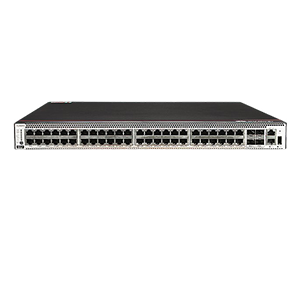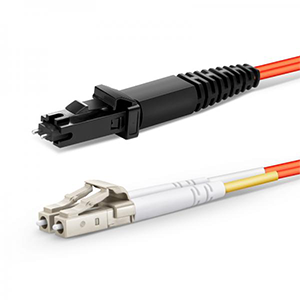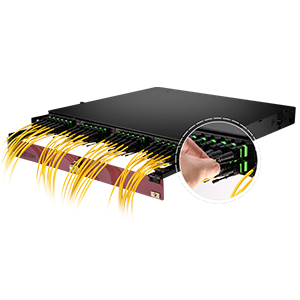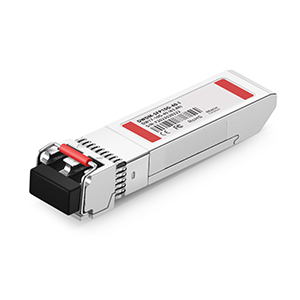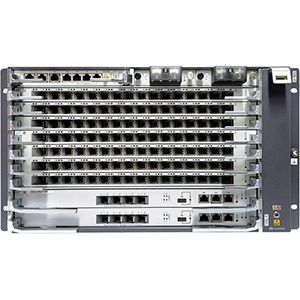Thank you very much for choosing to read this article. Today I will introduce to you BiDi fiber optic cable and its important role in fiber optic communication. BiDi fiber optic cable is an innovative solution that plays an important role in fiber optic communications through unique bidirectional transmission technology. Let’s take a deeper look at the advantages and uniqueness of BiDi fiber optic cables over traditional fiber optic cables.
BiDi Fiber Optic Cables Overview
BiDi fiber optic cable is a specially designed fiber optic cable used to achieve bidirectional transmission of fiber optic communications. BiDi stands for Bi-Directional, which uses special optical modules and fiber optic connectors to achieve bidirectional transmission through the same optical fiber.
The principle of BiDi fiber optic cable is to use different wavelengths for bidirectional transmission in the same optical fiber. It uses two different wavelengths, usually 1310nm and 1490nm or 1310nm and 1550nm, for sending and receiving data respectively. The transmission paths of these two wavelengths in the optical fiber are independent of each other, so bidirectional transmission can be achieved while reducing the use of optical fiber.
The role of BiDi fiber optic cable in fiber optic communications is to provide a cost-effective solution, especially suitable for situations with limited space or resource constraints. It enables bidirectional communications over existing single-mode fiber optic infrastructure without the need for additional fiber optic cables. This makes BiDi fiber optic cable a cost-effective, space-saving option.
How BiDi Fiber Optic Cables works
The working principle of BiDi fiber optic cable involves the technology of sending and receiving signals to achieve two-way data transmission. Here is a brief explanation of how BiDi fiber optic cables work:
Send a signal:
- BiDi fiber optic cable uses two different wavelengths to send and receive signals, usually 1310nm and 1490nm or 1310nm and 1550nm.
- The optical module at the transmitting end uses a wavelength (for example, 1310nm) to convert the electrical signal into an optical signal and sends it to the receiving end through the optical fiber.
- The optical module at the transmitting end is usually a laser diode or vertical cavity surface emitting laser (VCSEL), which emits an optical signal of a specific wavelength.
Receive signal:
- The optical module at the receiving end uses another wavelength (such as 1490nm or 1550nm) to receive the optical signal and convert it into an electrical signal.
- The optical module at the receiving end is usually a photodiode (PD) or photodetector (APD), which receives an optical signal of a specific wavelength and converts it into an electrical signal.
Optical fiber transmission:
- The optical signal from the sending end is transmitted to the receiving end through optical fiber. In optical fibers, optical signals of different wavelengths are transmitted using different optical channels and are independent of each other and do not interfere with each other.
- The optical signals in the optical fiber are separated and multiplexed through holographic multiplexing (WDM) technology to ensure that the sending and receiving signals are independent of each other.
Bidirectional transmission capability:
- BiDi fiber optic cable achieves the capability of bidirectional data transmission by using different wavelengths in the same optical fiber.
- The sending end uses one wavelength to send data, and the receiving end uses another wavelength to receive data. The signals in both directions are transmitted independently through the optical fiber without interfering with each other.
Advantages of BiDi Fiber Optic Cables
BiDi optical fiber cable has several advantages over traditional two-fiber bidirectional optical fiber cable, including saving optical cable resources and reducing costs, as well as application advantages in limited space and high-density environments. The following is a detailed discussion:
Save optical cable resources and reduce costs:
- BiDi fiber optic cable reduces the number of optical fibers required by enabling bidirectional transmission in the same optical fiber. Compared with traditional two-fiber bidirectional optical fiber cables, BiDi optical fiber cables only require one optical fiber to transmit bidirectional data, thus saving optical cable resources.
- BiDi fiber optic cable has lower costs in construction and deployment due to the use of less fiber. It enables bidirectional communications over existing single-mode fiber optic infrastructure, avoiding the expense of rewiring.
Application advantages in limited space and high-density environments:
- BiDi fiber optic cable’s bidirectional transmission capabilities make deployment in limited space and high-density environments easier. It only requires one optical fiber to achieve two-way communication. Compared with traditional two-fiber bidirectional optical fiber cable, BiDi optical fiber cable reduces the number and volume of optical cable bundles.
- In data centers, computer rooms, inside buildings or other places with limited space, the compact design and flexibility of BiDi fiber optic cables make wiring and maintenance more convenient. It can accommodate more fiber connections in limited ducts or cable troughs, providing higher connection density.
Compatibility and flexibility:
- BiDi fiber optic cable uses standard fiber optic connectors and is compatible with traditional fiber optic equipment. This means it integrates seamlessly with existing fiber infrastructure and equipment without the need to replace or upgrade other components.
- BiDi fiber optic cables are suitable for different application scenarios, including data center interconnection, local area network (LAN), wide area network (WAN) and network connections within buildings. It provides a flexible and cost-effective solution for a variety of network needs.
BiDi Fiber Optic Cables application case
BiDi fiber optic cables are widely used in many fields, especially in data centers, enterprise networks and communication systems. Here are some real-world application examples that demonstrate how BiDi fiber optic cables provide high bandwidth and reliable connectivity solutions:
Data center interconnection:
- Data centers require high bandwidth and reliable connections to support large-scale data transfer and processing. BiDi fiber optic cables play an important role in data center interconnection, providing high-density, high-capacity connection solutions.
- BiDi optical fiber cable can achieve bidirectional connection through a single optical fiber, saving optical cable resources and providing higher connection density. It is suitable for server interconnection within data centers, storage network connections, and remote interconnections between data centers.
Corporate network:
- In corporate networks, BiDi fiber optic cables can be used to establish high-speed, reliable network connections. It is suitable for local area network (LAN) and wide area network (WAN) deployment, ensuring the efficiency and security of data transmission within and outside the enterprise.
- The bidirectional transmission capability of BiDi fiber optic cables makes wiring more convenient in corporate environments with limited space, while reducing the cost and maintenance workload of fiber optic cables. It meets enterprise needs for high bandwidth and reliable connectivity.
Communication system:
- BiDi fiber optic cables also have important applications in traditional communication systems. For example, in optical transmission networks, BiDi fiber optic cables can be used to connect fiber optic transceivers and optical division multiplexers to achieve bidirectional data transmission.
- In wireless communication networks, BiDi fiber optic cables can be used for the deployment of fiber optic remote antenna systems (DAS). It provides high-bandwidth and reliable fiber optic connections to maximize signal transmission between base stations and antennas.
These application cases demonstrate the diverse applications of BiDi fiber optic cables in different fields. By providing high bandwidth, reliable connectivity and flexible cabling solutions, BiDi fiber optic cables become an essential part of meeting modern communications needs. Whether in large data centers, enterprise networks or communication systems, BiDi fiber optic cables can provide efficient and reliable data transmission and communication solutions.
BiDi Fiber Optic Cables Compatibility and Standards
BiDi fiber optic cable has good compatibility and can achieve interoperability with existing fiber optic equipment and standards. The following is an introduction to BiDi fiber optic cable compatibility and standards:
Compatibility:
- BiDi fiber optic cable uses standard fiber optic connectors, usually LC (Lucent Connector) or SC (Subscriber Connector) connectors. These connectors are widely used in traditional fiber optic equipment and systems, so BiDi fiber optic cables are compatible with existing fiber optic equipment.
- BiDi fiber optic cables can be interconnected with other types of fiber optic connectors by using adapters or adapters. This flexibility allows BiDi fiber optic cables to be integrated with a variety of fiber optic equipment and systems without the need to replace equipment or rewire.
BiDi fiber optic cable standards:
- BiDi fiber optic cables are usually used with fiber optic modules, which support bidirectional transmission. Here are some common BiDi fiber optic cable standards:
- BiDi SFP (Small Form-Factor Pluggable): This is a small module used to support bidirectional transmission of BiDi fiber optic cables. BiDi SFP modules typically operate at a rate of 1.25 Gbps and are suitable for short-distance communication and data transmission.
- BiDi SFP+: This is an upgraded version of the BiDi SFP module that supports higher data transfer rates, typically 10 Gbps. It can provide greater bandwidth and faster data transmission, suitable for high-speed network and data center applications.
- BiDi QSFP (Quad Small Form-Factor Pluggable): This is a four-channel high-density module that supports bidirectional transmission of BiDi fiber optic cables. BiDi QSFP modules are typically used for 40 Gbps and 100 Gbps high-speed network connections, providing higher bandwidth and data transmission capabilities.
- BiDi fiber optic cables are usually used with fiber optic modules, which support bidirectional transmission. Here are some common BiDi fiber optic cable standards:
These standards define the interface and communication specifications between BiDi fiber optic cables and related devices and modules, ensuring they can interoperate and enable bidirectional data transmission. By adopting these standards, BiDi fiber optic cables can be compatible with various types of fiber optic equipment and systems and provide efficient and reliable connection solutions. When selecting BiDi fiber optic cables, make sure to choose modules and connectors that are compatible with the required equipment and standards.
How to configure and maintain BiDi Fiber Optic Cables
Configuring and maintaining BiDi fiber optic cables requires some guidance and best practices. The following are guidelines for configuring and installing BiDi fiber optic cables, as well as best practices for maintenance:
Configure and install BiDi fiber optic cable:
-
Select the appropriate connector type: BiDi fiber optic cables typically use LC or SC connectors. Make sure the connector you choose is compatible with the fiber optic equipment and modules used and meets the required transmission rates and standards.
-
Ensure correct plugging and unplugging operations: Follow correct plugging and unplugging operations when connecting or disconnecting BiDi fiber optic cables. For LC connectors, gently insert the connector into the slot, making sure the plug is fully inserted. For SC connectors, insert the connector into the slot and turn clockwise to secure the connection.
-
Make sure the connector is clean: Before connecting or disconnecting the BiDi fiber optic cable, make sure the connector end face is clean. Use a clean fiber cleaning wand or a spray can to remove any dirt or dust from the connector end faces. Avoid touching the connector end face to avoid leaving fingerprints or oil stains.
-
Position and protect fiber optic cables: When installing BiDi fiber optic cables, ensure that the fiber optic cables are properly positioned and protected to avoid pulling, bending, or damage. Use appropriate fiber optic cable supports or jackets to protect fiber optic cables and ensure that the bend radius of the fiber optic cable does not exceed specified limits.
Best practices for maintaining BiDi fiber optic cables:
-
Clean the connector end face regularly: Clean the BiDi fiber optic cable connector end face regularly to ensure the quality and transmission performance of the optical path. Use a fiber cleaning wand or specialized fiber optic cleaning tool to clean, avoiding the use of dust or degreasers.
-
Check the connection quality: Check the connection quality of the BiDi fiber optic cable regularly. Use test equipment such as optical power meters and optical time domain reflectometry (OTDR) to measure the optical power and reflection loss of the connection. Make sure the connection quality meets requirements and fix any connection issues promptly.
-
Prevent pulling and bending: Avoid excessive pulling or bending of BiDi fiber optic cable to prevent fiber breakage or damage. Make sure the bend radius of the fiber optic cable meets the manufacturer’s specifications and use appropriate fiber optic cable brackets or jackets to protect the fiber optic cable.
-
Regularly check the fiber optic cable environment: Regularly check the environment where the BiDi fiber optic cable is located to ensure that nothing is compressing or damaging the fiber optic cable. Keep areas around fiber optic cables clean and avoid exposure to excessive temperatures or humidity.
Following the above configuration and maintenance guidance and best practices can ensure good performance and reliable connections of BiDi fiber optic cables. Regular maintenance and inspections can detect potential problems in advance and take appropriate measures to ensure the normal operation of fiber optic cables.
Summarize:
By choosing BiDi fiber optic cable, you get outstanding performance and reliability to provide superior support for your business. If you are interested in BiDi fiber optic cable, please consider contacting us, we will provide you with professional configuration and maintenance support to ensure you have an efficient fiber optic communication system.
- What is BiDi in fiber?
- What is the difference between BiDi and dual fiber?
- What is a BiDi in networking?
- How does BiDi SFP work?
- What is the difference between BiDi and normal SFP?
- What is SFP+ BiDi?
- What are the advantages of BiDi SFP?
- Why is BiDi technology used?
- What is 40gb BiDi?


